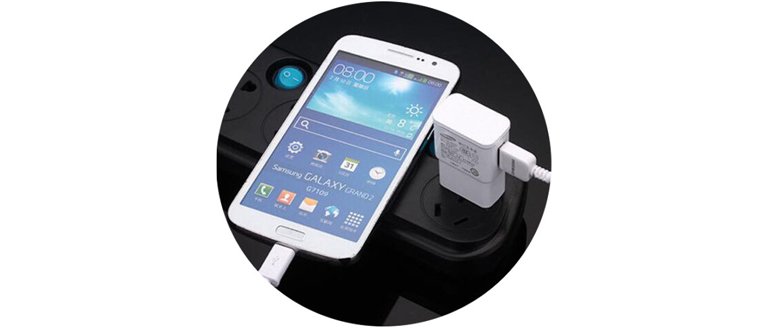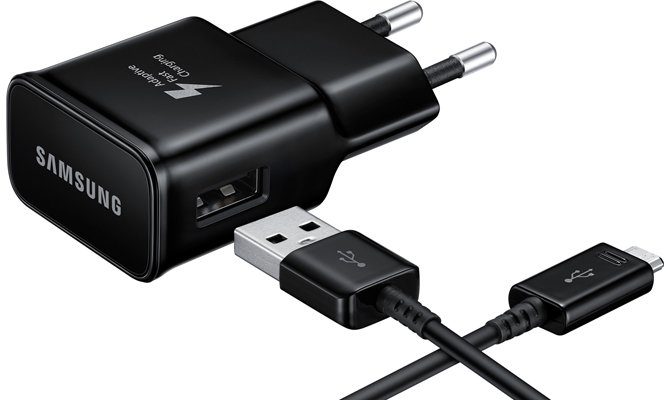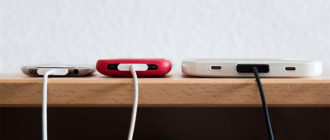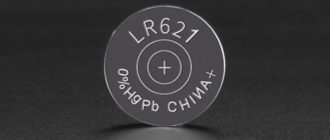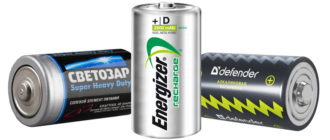Modern smartphones have a large number of functions, and even more powerful batteries do not always save. Therefore, manufacturers are trying to introduce various technologies to optimize the process. Some increase the battery, some produce software improvements, but if another method is to make charging as fast and efficient as possible. Samsung has succeeded in everything, many of their models can not only hold a charge for a long time, but also replenish it quickly. This article will focus on Samsung's fast charging.
Content
What is fast charging in Samsung smartphones
This is a kind of technology that allows you to recharge the battery as quickly as possible. With it, the device can be fully charged within an hour. To implement such charging, a special charger with an integrated chip is used that controls the output voltage and current strength. Also, for fast charging, you need support from the side of the smartphone itself.
All Samsung's fast-charging smartphones use Qualcomm's Quick Charge technology. This technology uses a conventional wire to transmit a large amount of current in a short period of time. There are several versions of this technology, namely 1.0, 2.0, 3.0, 4.0 and so on. The most common is 3.0, but it is not the most effective. Now there is already Quick Charge 5.0, and soon more will appear.
Which Samsung phones support fast charging
Only flagship models and some mid-budget series get support. The rest are satisfied with the usual dual-ampere charging without support for Quick Charge. Fast charging technology is available on these smartphones:
- In all S lines starting with the Galaxy S7, that is, newer models also have this standard;
- EDGE and Note versions from the seventh generation;
- Tablet Tab S3 and newer;
- A5, A7, A9;
- C5, C7, C9, C9 Pro.
Other products, such as the Galaxy J7, C8, and so on, have normal charging in the kit. It has the characteristics of 5V / 2A, that is, it actually has speed. But this is not a standard, but just a slightly increased amount of current received via USB.
The smartphone itself is not equipped with any technological connectors and bells and whistles for improved battery typing speed. Such smartphones will charge quickly, but not in comparison with competitors Quick Charge.
How to enable the fast charge function in Samsung
To do this, several conditions must be met. One of the most important - you need to connect the device through a special charger that supports Quick Charge with the same version as the system. In all Samsungs, such a cord is already included, so it is recommended to charge only through the complete charger. If you insert a simple wire, then fast charging will not work.
Important! When charging is connected, a notification “The smartphone is charging via fast charging” may appear in the notification of the smartphone, accompanied by the corresponding icon. This means that a cable with 5V / 2A is connected to the smartphone, but this does not show the maximum charging method possible for this model.
To get the fastest current possible, you need to use the correct cord and turn on the quick charge function in the smartphone settings. To do this, do the following:
- Open smartphone settings through the status bar or shortcut on the desktop;
- In the settings go to the "Optimization";
- Next, in the bottom panel, click on the "Battery" icon;
- Click on the three dots in the upper right and open the task window;
- Go to "Advanced Settings";
- Check the box next to "Quick charge."

How to disable fast charging on Samsung
You can disable this function in the settings. To do this:
- Open settings;
- Next, select "Optimization";
- After click on “Battery” in the lower menu;
- Open the menu in the upper right by clicking on three points;
- Go to "Advanced Settings";
- Uncheck “Quick charge”.
To disable fast charging, you can use a single-ampere wire. In addition, high-speed power will not function through any adapters. The user will receive a sign that the food is supposedly accelerated, but this is not so.
Is fast charging harmful for phones
It is very useful for the user, as it helps to save a lot of time and reduce waiting. But for a smartphone, this has dire consequences. If there are several reasons why it is better not to resort to the use of an improved recharge speed if possible.
At first. Overheat. If the smartphone is in a calm state, then nothing bad will happen. But when charging and simultaneous use, the gadget's body will noticeably heat up to the point that it will start to trot and lag. So it is recommended to turn off the speed during use. But if the phone is located in not very hot conditions and at rest, then everything will be fine.
Secondly. It adversely affects the battery and wears it out. Yes, this wear and tear in everyday life is not noticeable. However, if you operate it every day, then after a couple of years the battery will nevertheless greatly miss its positions and will hold about 30% worse. But even without recharging the battery, it deteriorates on its own. If possible, to preserve the novelty of components, it is better to disable the function. For example, when the phone remains at the wall outlet all night.

